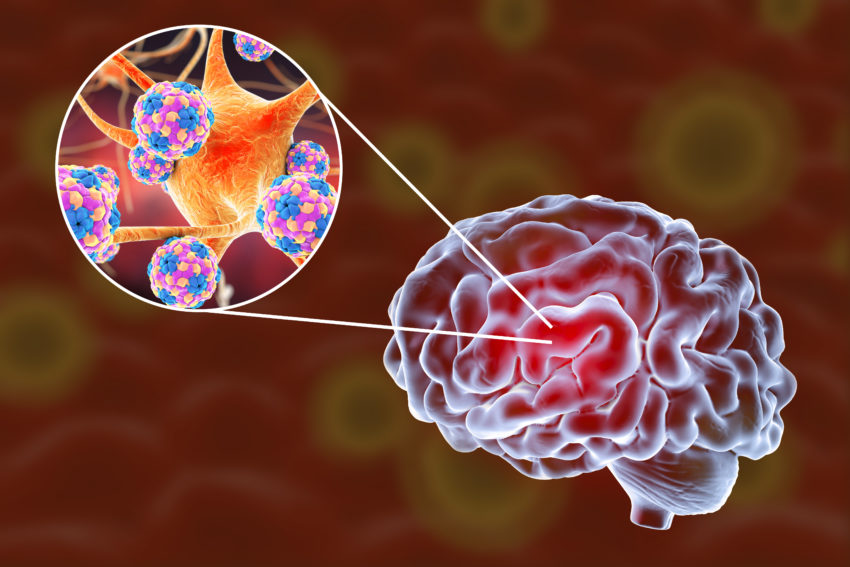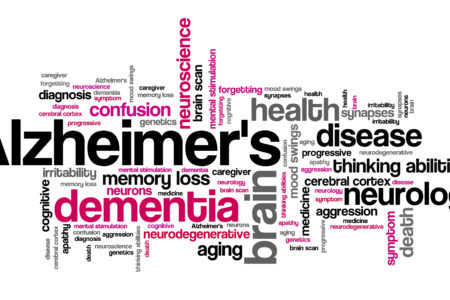
Share On Social!
A childhood virus that infects almost everyone and lies dormant in the body for life might be involved in Alzheimer’s disease, NBC News reports.
A recent study by the Icahn School of Medicine at Mount Sinai examined 622 brains afflicted with Alzheimer’s and 322 disease-free brains. Researchers found increased levels of two Roseoloviruses—human herpesvirus 6A (HHV-6A) and human herpesvirus 7 (HHV7)—interacting with gene networks in areas of the brain that are known to be affected in Alzheimer’s Disease.
HHV-6 and HHV-7 cause roseola, a disease that usually infects babies and toddlers and is found in 90% of U.S. children.
Roseola usually causes a fever and sometimes a rash and rarely causes complications, although it can cause a dangerous brain inflammation called encephalitis, according to NBC News. HHV moves to nerve cells and the brain, and can lie dormant for years.
The authors emphasized that they did not find that these viruses cause Alzheimer’s.
But their research, along with another study, suggests that viruses could kick-start an immune response that might increase the accumulation of amyloid, a protein in human brains which clumps into the telltale plaques of Alzheimer’s.
“I don’t think we can answer whether herpes viruses are a primary cause of Alzheimer’s disease,” geneticist Joel Dudley, who helped lead the study, told NBC News. “But what’s clear is that they’re perturbing networks and participating in networks that directly accelerate the brain towards the Alzheimer’s topology.”
Alzheimer’s Disease in Latinos

Finding out how Alzheimer’s Disease develops is important, especially for Latinos.
Studies also suggest that Latinos in United States are 1.5 times more likely to develop Alzheimer’s than White non-Latinos.
In the U.S., two-thirds of Alzheimer’s patients are women. Latinas are at higher risk than non-Latinas.
This isn’t the only issue Latinos suffer disproportionately from.
Viral Infectious Diseases in Latinos

Prevalence of viral infectious diseases like HIV and viral hepatitis are high in Latinos compared to their peers.
In 2014, Latinos made up 17% of the U.S. population and accounted for 23% of estimated diagnoses of HIV infection.
A recent study showed that Latinos diagnosed with HIV are less likely than whites to be linked to care, retained in care, receive antiretroviral treatment and achieve adequate viral suppression.
One of the main causes of these growing numbers of U.S. liver cancer deaths in United States is HCV (Hepatitis C virus) infection.
HCV infection and being Latino are major risk factors for HCC-related mortality in the US from 1988 to 1994, according to studies.
Latino men (20.1 per 100,000 men) and Latinas (7.7 per 100,000 women) have the highest rates of liver cancer.
What connection might these viruses have to Alzheimer’s disease?
More research is needed, according to researchers.
“Whatever the case, the new studies make the once-controversial idea that a virus is involved in Alzheimer’s another reasonable avenue of study. That’s unlikely to be the end of the story,” reports Smithsonian.com. “A lot of genetic factors are also at play in the disease, and it will take more studies to untangle how immune reactions, genetics and other factors play into its progression.”
Explore More:
Healthy Families & SchoolsBy The Numbers
142
Percent
Expected rise in Latino cancer cases in coming years



